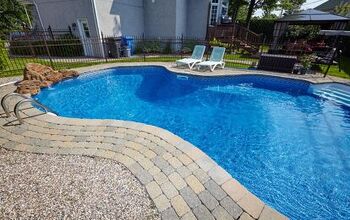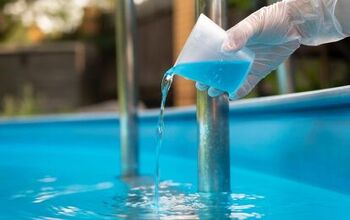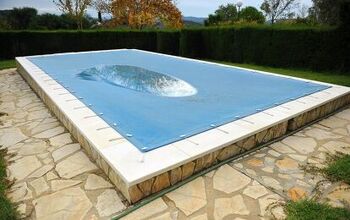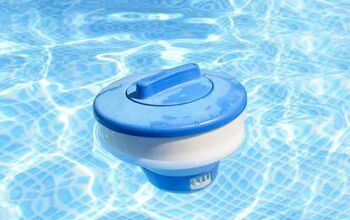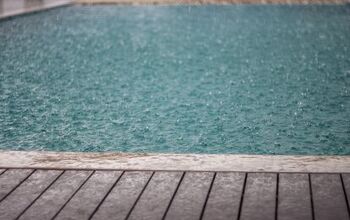What Is A Pool Conditioner? (Find Out Now!)

As an avid fan of hair products, I know a ton of different conditioning treatments for my hair. As a swimming enthusiast, I had absolutely no idea that pool conditioners are a thing, too. We all know that conditioners are supposed to make the quality of the intended object improve. However, pools are pools. So, what is a pool conditioner supposed to condition? The water’s already clean, so….what’s going on here?
Pool conditioner is a chemical additive that helps slow down the deterioration of chlorine molecules. Since chlorine is UV sensitive, you may need to add a conditioner to keep your pool chlorinated in sunny areas. Most of the time, it’s used to help extend the time between shock sessions and to stabilize chlorine levels in your pool.
When you see pool conditioner on your store shelves, it’s normal to get a little curious about what it means for your pool. It’s time to shed a little light on the subject.
Do You a Need Pool, Spa, or Hot Tub Contractor?
Get free, zero-commitment quotes from pro contractors near you.

What Is Pool Conditioner Known As?
Pool conditioner has a bunch of different names it’s known by. You might have seen it labeled sun-shield, stabilizer, or Pad-Con. Many companies also sell it by its chemical name: cyanuric acid (CYA). Either way, it’s there to help ensure that your chlorine doesn’t evaporate quickly while it’s being exposed to UV light from the sun.
Do All Pools Need Conditioner?
Because it is meant to help stabilize your pool water levels, you may need to get at least a little bit of it in your pool. However, not all pools are going to need you to actually pour some conditioner by hand. A professional test will tell you if you need any additional conditioner in your pool. (Don’t worry, we’re going to get into that later.)
How Do You End Up With Stabilizer In Your Pool?
You might be curious as to how you might have some stabilizer already in your pool. Well, this has much to do with the current pool products on the market. There are two main ways to get pool conditioner into your pool:
- Pre-Stabilized Chlorine. Pre-stabilized chlorine products come with the CYA already added into the mix at an acceptable (or near-acceptable) level. You can usually find this in tablet form or certain liquid additives. All pre-stabilized chlorine products will mention that they’re pre-stabilized on the packaging. Some might also use the term “sun-shielded” as a way to mention it.
- Stabilizer Products. If you add cyanuric acid to your pool directly, then you should obviously expect it to be there. Due to the increase in usage of pre-stabilized chlorine products, this is becoming increasingly rare to see.
Why Would You Use Non-Stabilized Chlorine?
There are several products on the market that can only be bought in a non-stabilized version. This includes straight liquid chlorine, chlorine generators, as well as some ultra-chlorination products. Even then, it’s worth noting that it’s usually a matter of personal preference to use non-stabilized chlorine.
An Important Note About Stabilizing Your Chlorine
It’s important to know how much stabilizer your pool needs, if it even needs it. So, this means that testing is key. However, just grabbing a test kit is not going to be enough to do it right. Chlorine is one of those chemicals that will take a couple of days to adjust, and that means you can’t just whip out the testing kit as soon as you chlorinate your pool.
To get a correct reading for your stabilizer levels, you need to test your pool approximately 3 to 5 days after you’ve added chlorine or shocked your pool. This gives you a better idea of the true reading of CYA.
How Much Stabilizer Do You Need?
Stabilizer can be measured through the right testing kit. If you have 40 ppm of stabilizer, then you don’t need to add more. Adding more might cause a problem called “purple,” in which it turns your pool water slightly purple. In some cases, you might also notice a higher count in your dissolved solids readings in your pool tests and your pool water maybe unable to kill off bacteria and algae.
So, what we’re saying is that you need to keep your CYA levels close to 40 to start with. Some pools might be okay with a slightly higher level (like 100) but the truth is that you don’t need much conditioner to make your pool stay good.
Do You a Need Pool, Spa, or Hot Tub Contractor?
Get free, zero-commitment quotes from pro contractors near you.

Related Questions
How much does pool conditioner cost?
Pool conditioner is fairly affordable. You should be able to get a jug of pool conditioner for around $10 to $30. The biggest difference in price points comes from the size of the bottle of conditioner that you buy. Since it’s going to be the same chemical regardless of what brand you buy, there is no reason to try to get a fancier brand. It’s all about how much of the product you will get out of the purchase.
Is baking soda a pool stabilizer?
Baking soda is often marketed as a pool stabilizer on online forums, but no one in their right mind would use it as the only stabilizer in their pool. This stuff may offer a way to reduce acidity, but it does not protect the chlorine in your pool from UV rays. Using baking soda to try to stabilize your chlorine levels will do nothing but make your pool a bit of a mess. Do not try to use this as a “natural” alternative, okay?
How do I remove excess CYA from my pool?
The best way to remove too much CYA is to drain small quantities of pool water out and then add fresh water in. This effectively dilutes your CYA levels and lets you adjust it as you see fit. With that said, there are also some filters that actively suck up CYA as part of their filtration style. So if you don’t feel like draining out your pool, investing in one of those filters will be able to do the trick. They’re pricey, but it’s clear that they do their job well.

Ossiana Tepfenhart is an expert writer, focusing on interior design and general home tips. Writing is her life, and it's what she does best. Her interests include art and real estate investments.
More by Ossiana Tepfenhart










